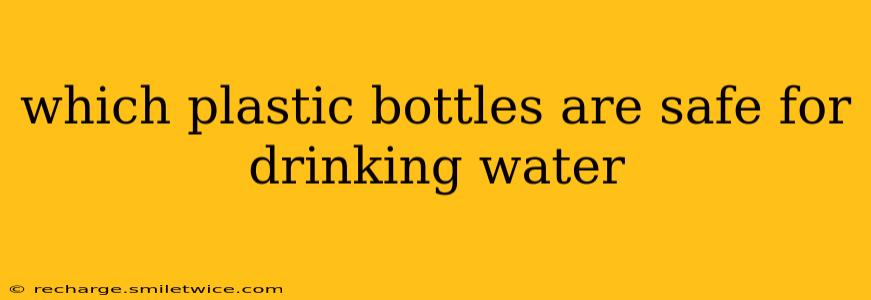Which Plastic Bottles Are Safe for Drinking Water? A Comprehensive Guide
Choosing the right plastic bottle for your drinking water is crucial for both your health and the environment. Not all plastics are created equal, and some can leach harmful chemicals into your water, especially when exposed to heat or repeated use. This guide will help you navigate the world of plastic water bottles and choose the safest options.
Understanding Plastic Bottle Codes:
The first step in determining the safety of a plastic bottle is understanding the recycling codes found on the bottom. These codes, usually a number inside a triangle, indicate the type of plastic used. However, the code alone doesn't guarantee safety for repeated use or prolonged contact with water.
Which plastics are generally considered safe for water bottles?
-
#1 PETE or PET (Polyethylene Terephthalate): This is the most common type of plastic used for single-use water bottles. While generally considered safe for single use, prolonged exposure to heat or repeated use can lead to leaching of chemicals. It's best to avoid refilling PET bottles.
-
#2 HDPE (High-Density Polyethylene): This plastic is often used for milk jugs and detergent bottles. It's generally considered safe for repeated use and is a better choice than PET for reusable water bottles. Look for bottles specifically labeled as HDPE for reuse.
-
#4 LDPE (Low-Density Polyethylene): This is a flexible plastic often used for squeezable bottles and plastic bags. While generally considered safe, it's not as commonly used for water bottles.
Which plastics should you avoid for drinking water?
-
#3 PVC (Polyvinyl Chloride): Avoid PVC bottles completely. PVC can leach harmful chemicals, including phthalates, which are endocrine disruptors.
-
#6 PS (Polystyrene): Styrofoam cups and takeout containers are made from polystyrene. It's not recommended for water bottles as it can leach styrene, a potential carcinogen.
-
#7 Other: This category includes a variety of plastics, and their safety varies significantly. It's best to avoid bottles labeled with #7.
Are BPA-free plastics always safe?
While BPA (bisphenol A) is a known endocrine disruptor and has been linked to several health problems, the absence of BPA doesn't guarantee complete safety. Other chemicals can mimic BPA's effects, so it's essential to choose reputable brands and consider the overall composition of the plastic.
How can I reduce plastic waste when drinking water?
The most environmentally friendly option is to avoid single-use plastic bottles altogether. Consider these alternatives:
-
Reusable stainless steel water bottles: These are durable, safe, and environmentally friendly.
-
Glass water bottles: Glass is a non-toxic and reusable option.
-
Reusable plastic bottles made from HDPE: Opt for reusable bottles specifically labeled as HDPE.
What are the best reusable water bottles for drinking water?
The "best" reusable water bottle depends on your individual needs and preferences. Some factors to consider include:
- Material: Stainless steel or high-quality HDPE.
- Durability: How often you plan to use it and its resistance to damage.
- Size and portability: Does it fit in your bag or cup holder?
- Features: Insulation, leak-proof lid, etc.
Choosing safe and sustainable options for your drinking water is a significant step toward protecting your health and the environment. By carefully selecting your plastic water bottles and considering reusable alternatives, you can minimize risks and reduce your environmental impact. Remember to always check the recycling code and manufacturer information for clarity on the plastic type and its intended use.
